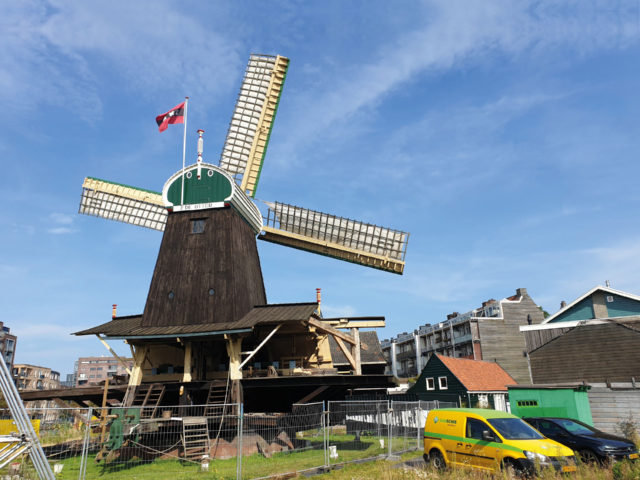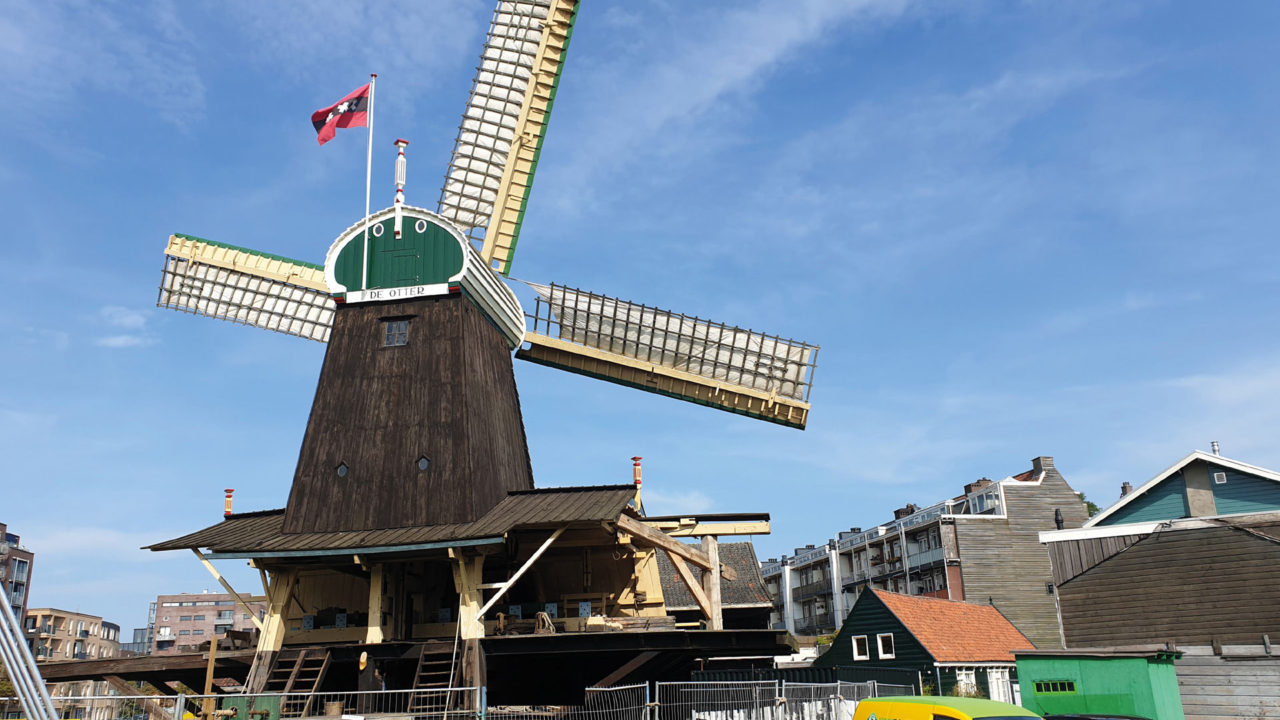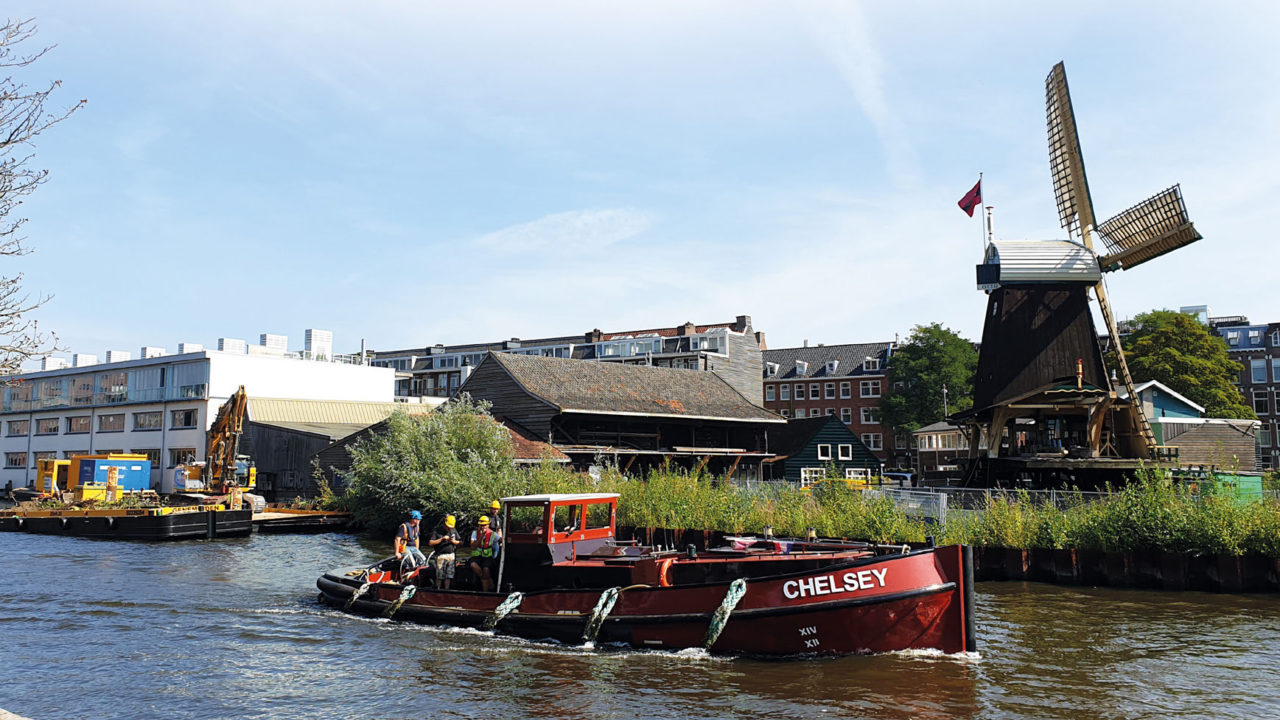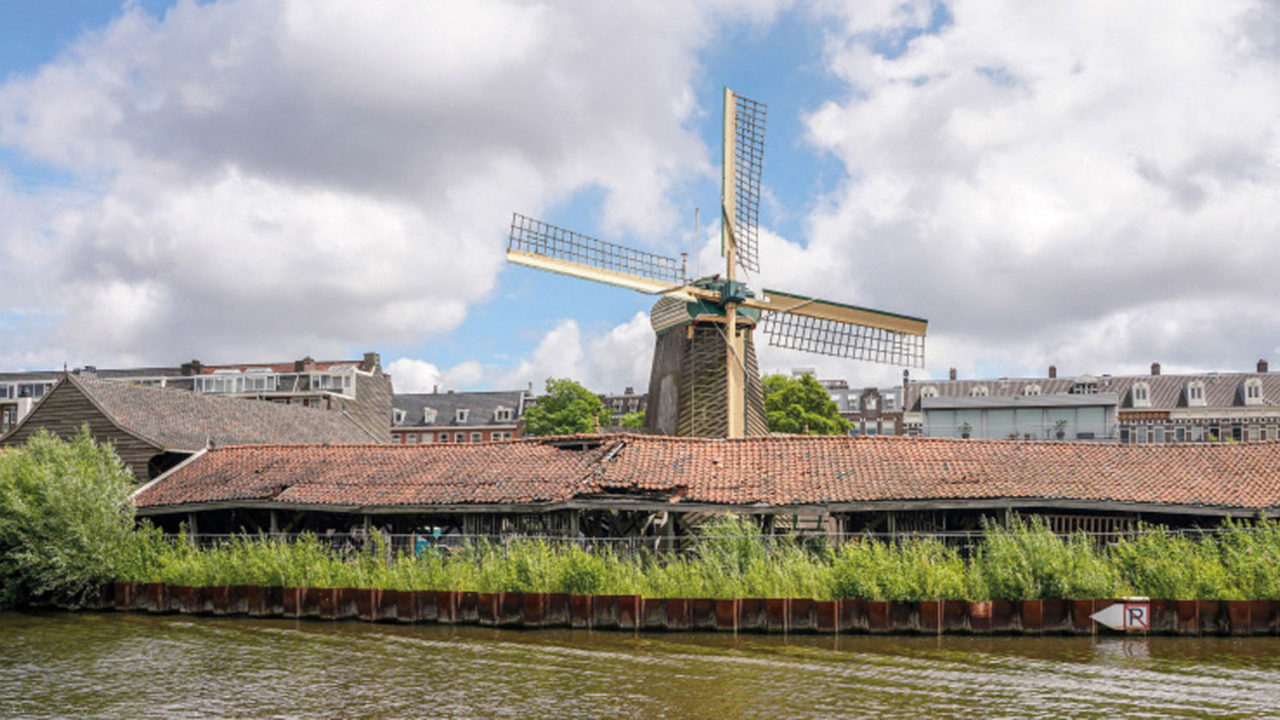It stands along the Kostverlorenvaart, in a historic spot in the heart of Oud-West, a piece of Amsterdam reminiscent of a painting by Jacob van Ruysdael.
“The mill is almost 400 years old and it still runs like hell,” said the miller. That has not always been the case. The Otter has stood idle for 10 years and has only been able to turn around again since 2017. At the time – in 1631 – it was deliberately placed outside the city walls to catch a lot of wind and also built close to the water, so that timber could be transported by boat to the VOC’s shipyards.
The quays of the Kostverlorenvaart have deteriorated considerably over the years, and the banks have also begun to sag. Dry sheds were especially at risk. Those were right along the water. They are now dismantled and stored elsewhere. They are later rebuilt in the exact same place.





